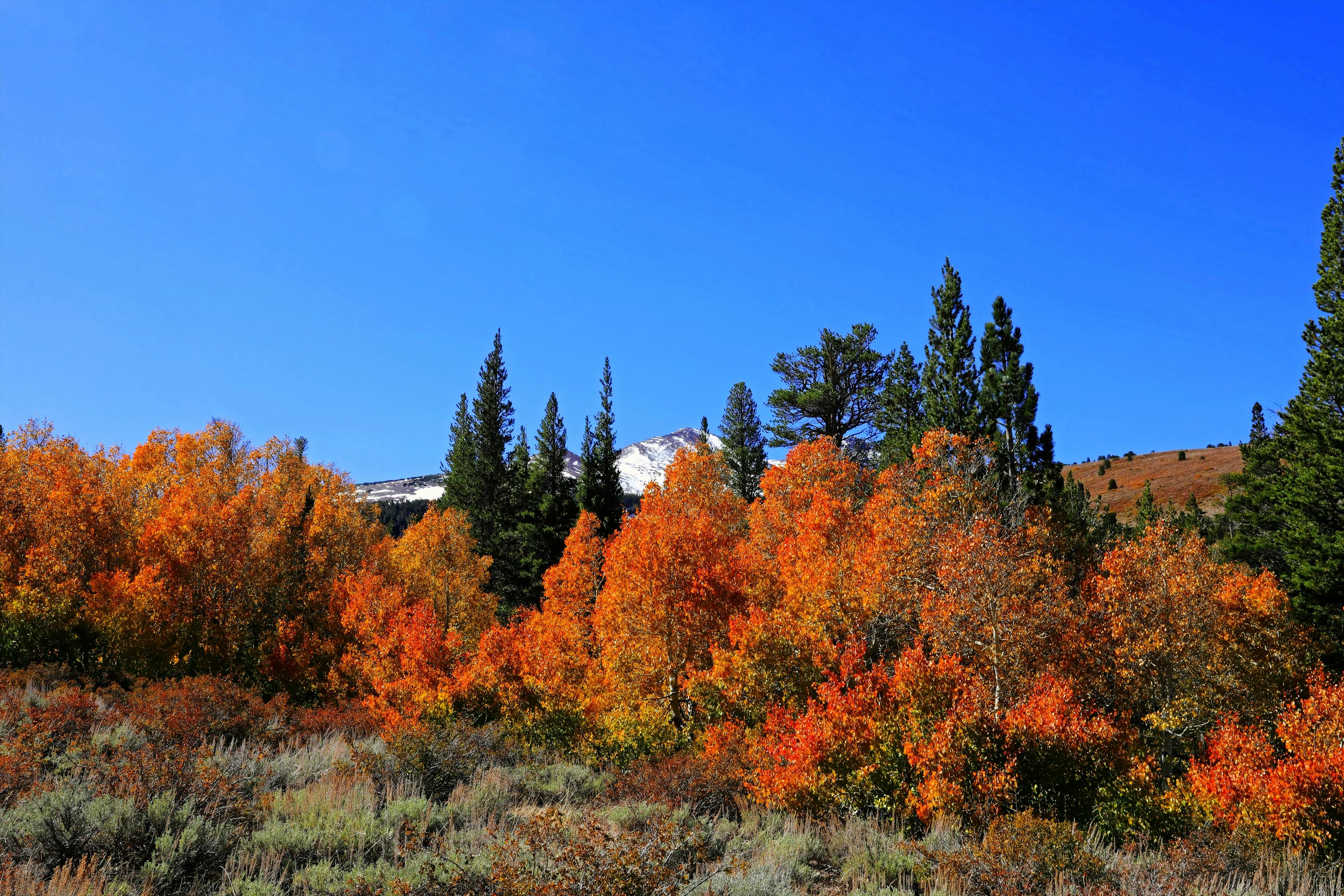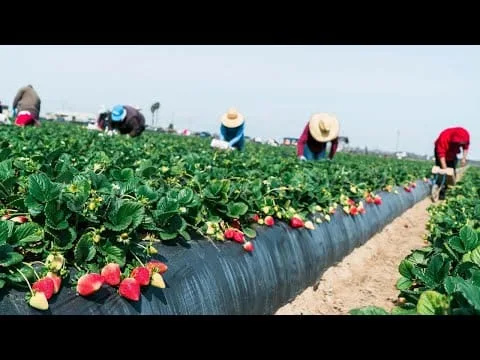When it comes to delicious fruits, one of the most popular choices is the strawberry. If you live in Southern California or are planning a trip there, you may be wondering when strawberry season takes place. Fortunately, strawberries are available in Southern California year-round, although peak season does vary depending on the region and weather.Strawberry season in Southern California typically runs from late April through late June.
When Is The Best Time to Plant Strawberries In Southern California?
The best time to plant strawberries in Southern California is during the early spring months, from February to April. This allows the plants to establish a strong root system before the heat of summer arrives. Strawberries need at least six hours of direct sunlight a day and full sun exposure is best for optimal growth. When planting strawberries, make sure the soil is well-drained and amended with plenty of organic material such as compost or aged manure. Planting in raised beds will also help improve drainage and provide more air circulation for the plants.
Once planted, strawberries should be watered regularly throughout the season, especially during dry spells. Mulching around the plants can help keep moisture in the soil and reduce weeds. Fertilizing should also be done at least once during growing season with an organic fertilizer that is high in nitrogen, phosphorus, and potassium.
Strawberries are prone to pests and diseases so it’s important to keep a close eye on plants throughout the season for signs of infestations or disease. If any pests are spotted, they should be removed and treated immediately with an appropriate insecticide or fungicide before they spread to other plants.
Harvesting begins late spring/early summer when berries develop their red color but are still firm when squeezed gently. Berries can be harvested every few days until fall when they will no longer produce new fruit.
By planting strawberries in early spring, gardeners in Southern California can enjoy fresh berries all summer long!
Climate
Southern California has a mild Mediterranean climate, which is ideal for growing strawberries. The warm days and cool nights provide the right amount of sunlight and moisture for the plants to thrive. The region also has moderate humidity, which helps to keep the strawberry fields from becoming too dry or too wet. The coastal winds help to keep the air circulating and help to reduce pests and disease. In addition, the mild temperatures help to reduce the risk of frost damage, which can be a problem in other parts of the country. With these ideal conditions, strawberry season in Southern California usually runs from April through June.
Rainfall
Rainfall is an important factor in determining when strawberry season will begin and end in Southern California. Too much rainfall can lead to flooding of crops, resulting in poor yields. On the other hand, too little rainfall can cause drought-like conditions that can stunt growth and reduce yields as well. In general, rain should be at least occasional during strawberry season in order to ensure adequate moisture for plants to produce healthy fruit.
Pests & Disease
Strawberries are susceptible to a variety of pests and diseases. In Southern California, some of the most common problems include whiteflies, aphids, root rot, powdery mildew and fruit rot. To reduce these risks during strawberry season it is important to practice good crop rotation techniques as well as use appropriate pest control methods when necessary.
Soil Quality
The quality of soil is another important factor that affects strawberry season in Southern California. Poor quality soil can lead to stunted growth or even death of plants due to nutrient deficiencies or toxic levels of certain elements like sodium or chloride. To ensure proper growth during strawberry season it is important to test soil samples for nutrient levels before planting strawberries.
Variety Selection
The type of strawberry variety selected will also influence how successful a crop will be during strawberry season. Certain varieties are better suited for different regions and climates than others so it is important to select varieties that are suited for your particular area. Some varieties may also have shorter growing seasons than others so it is important to select varieties that have adequate time for harvest before fall frosts arrive.
Ideal Weather Conditions for Growing Strawberries in Southern California
Growing strawberries in Southern California is a worthwhile endeavor, as the climate is ideal for producing sweet and juicy berries. Many factors affect the growth of strawberries, but the primary ones are temperature, humidity, and rainfall. The ideal weather conditions for growing strawberries in Southern California include temperatures ranging from 50 to 80°F, low humidity levels (below 50%), and moderate rainfall of 1-2 inches per week.
The best time to grow strawberries in Southern California is during the spring and summer months when temperatures are warmer. Warmer temperatures help promote growth and flavor in the strawberries. However, it’s important to not let temperatures exceed 80°F as this can cause premature ripening or even death of the plant.
Humidity levels should be kept low to prevent mold from growing on the berries. High humidity levels can also create an environment where pests can thrive. Keeping humidity levels below 50% is ideal for strawberry plants.
Finally, moderate rainfall of around 1-2 inches per week helps keep soil hydrated and ensures that strawberry plants are able to access all the water they need without over or underwatering them. Too much water can cause root rot while too little water can stunt growth or even kill plants if left unchecked for too long.
By maintaining these optimal weather conditions, you’ll be able to grow delicious strawberries that will be sure to please all your friends and family!
The Benefits of Growing Strawberries in Southern California
Southern California is an ideal climate for growing strawberries, with its mild temperatures, ample sunshine, and rich soil. Strawberries are a popular fruit among home gardeners and commercial growers alike due to their sweet flavor, versatility, and high nutritional value. Growing strawberries in Southern California can offer a number of benefits to growers.
One benefit of growing strawberries in Southern California is the abundance of available resources. The region has an ample supply of water, fertile soil, and plenty of sunshine for optimal growth. This means that the plants will be more productive and less prone to disease or infestation. Additionally, many different varieties of strawberries can be grown in this region, allowing for more options when it comes to harvesting and enjoying the fruits of your labor.
Another advantage to growing strawberries in Southern California is the ability to extend the growing season. In other parts of the country, strawberry season may only last a few weeks; however, due to its mild climate and long days, growers in Southern California can enjoy an extended harvest season that allows them to enjoy fresh berries for much longer. Additionally, because there are fewer pests and diseases in this area than other parts of the country, growers can avoid having to use harmful chemicals on their crops.
Finally, growing strawberries in Southern California offers numerous health benefits for both humans and animals alike. Strawberries are high in fiber, vitamin C, antioxidants, potassium, folate, magnesium and other essential nutrients that promote good health. Moreover, consuming fresh strawberries provides more than just nutrition; they add flavor and texture to meals that would otherwise be bland or boring.

How To Choose The Best Strawberries For Planting In Southern California
Strawberries are one of the most popular fruits in the world and are widely grown in Southern California. If you’re looking to grow your own strawberries in Southern California, it’s important to know which varieties will thrive best in this climate. Here are some tips on choosing the best strawberry variety for planting in Southern California.
First, you should consider the seasonality of the strawberry crop. Depending on where you live, certain varieties may produce more fruit during certain seasons than others. Some varieties may be better suited for winter or spring months while others may be more productive during summer and fall months. Knowing when your local strawberries will be available can help you choose a variety that will be most productive during those times of year.
Second, consider soil type and drainage when selecting a strawberry variety for planting in Southern California. Strawberries prefer a well-drained soil with a pH between 6 and 7. If your soil is too acidic or alkaline, it can affect how well the plants grow and produce fruit. You should also check for any soil-borne diseases that could affect your strawberry plants before planting them.
Third, decide if you want to grow June-bearing or everbearing strawberries in Southern California. June-bearing strawberries typically produce one large crop each year from late spring to early summer, while everbearing varieties can produce two smaller crops throughout the growing season. Depending on your climate and preference, choose either type of strawberry for your garden.
Finally, research different strawberry varieties to find which ones have been successful in Southern California gardens. Ask local garden centers or extension offices what has worked well in their area so you can make an informed decision about which variety to plant in your garden this year. With careful selection and proper care, you’ll be enjoying delicious homegrown strawberries before long!
Location of Planting
When planting strawberry plants in Southern California, it is important to choose a location that has good drainage and plenty of sunlight. Strawberries do best in well-drained soils with a pH between 6.0 and 7.0. Avoid planting in areas that are prone to flooding or overly wet conditions. For optimal growth, it is also important to choose a site that receives at least six hours of direct sunlight each day.
Soil Preparation
Before planting your strawberry plants, the soil should be prepared with organic matter such as compost or aged manure. This will help improve drainage and provide essential nutrients for your plants. After adding organic matter, mix it into the top 8-10 inches of soil and work it into existing soil with a shovel or tiller. Be sure to remove any rocks or debris that may be present in the soil before planting.
Watering
Strawberry plants require regular watering throughout the growing season to stay healthy and produce fruit. During periods of extreme heat, watering should be done twice a day to keep the soil moist but not soggy. Water should be applied at ground level rather than from overhead to reduce disease risk and ensure adequate root growth. In general, strawberry plants need about 1 inch of water per week.
Fertilizer
Fertilization is an important part of caring for strawberry plants in Southern California. It is best to use a balanced fertilizer such as 10-10-10 or 12-12-12 at planting time and again during midseason when the fruits are forming. If using organic fertilizer, apply at a rate of 4 pounds per 100 square feet of garden space every two months.
Mulching
Mulching is beneficial for keeping moisture levels high and preventing weeds from competing with your strawberry plants for water and nutrients. A layer of straw mulch should be applied around each plant after they have been planted and watered thoroughly. Be sure to keep the mulch away from the crowns (where leaves meet stems) since this can cause rot.
Pruning
Strawberry plants should be pruned during late winter or early spring before new growth begins to emerge. Pruning should involve removing all leaves that are brown or wilted as well as any thin shoots that may have developed during the previous season’s growth cycle. This will help encourage new growth and better yields come harvest time.
Harvesting Strawberries In Southern California
Harvesting strawberries in Southern California can be a rewarding experience for all involved. Whether you’re a commercial grower or just an individual wanting to enjoy the sweet taste of fresh strawberries, there are some tips and tricks to help make your harvest successful. First and foremost, it’s important to choose the right variety for your region; different varieties thrive in different climates and soil conditions. Next, it’s important to monitor the ripeness of the berries; if you harvest too early, they won’t be ripe enough for eating or selling, but if you wait too long they will start to spoil before you can enjoy them.
When harvesting, it’s important to use clean tools such as knives and scissors; this will help prevent contamination of the berries with dirt and bacteria. It’s also important to pick each berry individually by gently cupping it in your hand and pulling off the stem with two fingers. When picking berries from a plant, avoid taking off too much foliage as this can cause stress on the plant. Lastly, always store your harvested strawberries in a cool place away from direct sunlight; this will help them retain their flavor and freshness for longer periods of time.
Harvesting strawberries in Southern California is an enjoyable experience that can bring many rewards. With some careful planning and attention to detail, you can ensure that your strawberry yield is plentiful and delicious!

Conclusion
Strawberry season in Southern California typically begins in late March and runs through mid-June. During this time, you can find the sweetest and juiciest strawberries at local farmers’ markets or on the shelves of your favorite grocery store. Although there are some variations depending on the particular region and weather conditions, the general timeframe is usually the same.
For those looking to get the most out of strawberry season in Southern California, it is best to plan a visit or pick up some fresh strawberries as soon as possible during that sweet window of time. With the right timing and planning, you can enjoy some of the best strawberries around!

